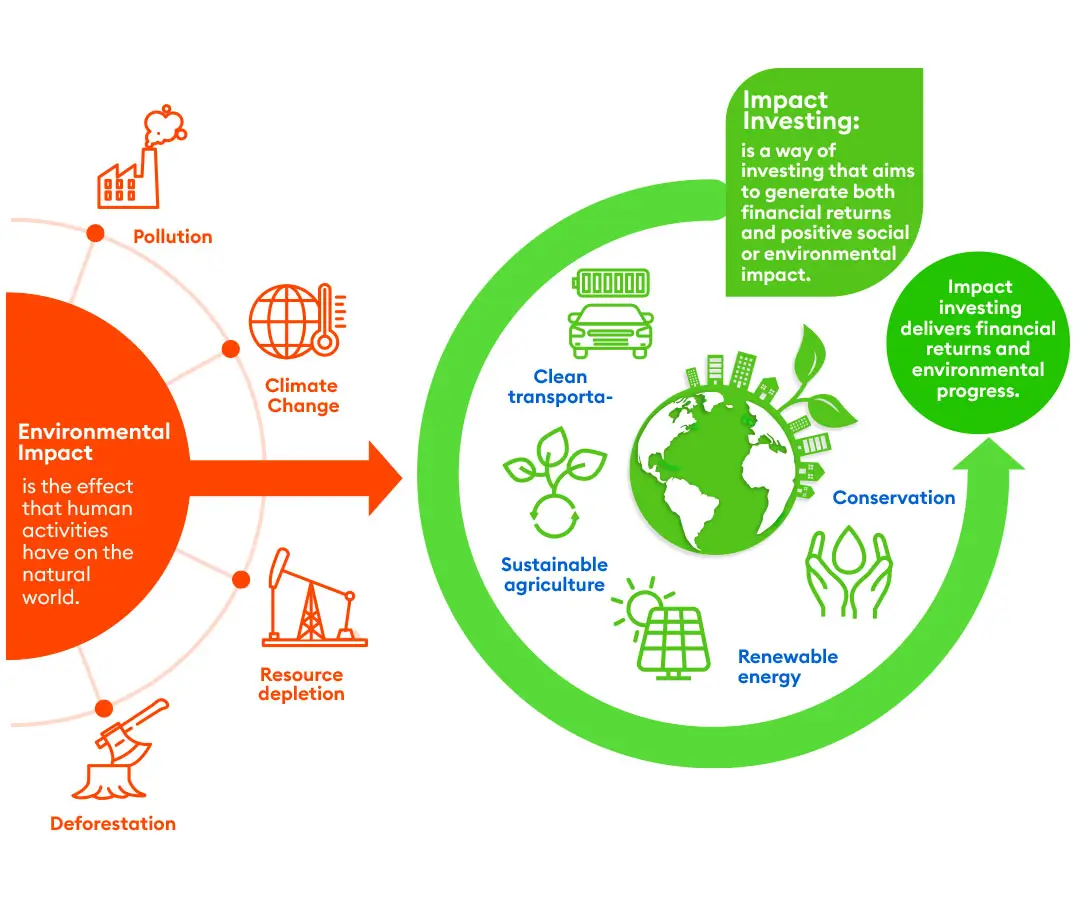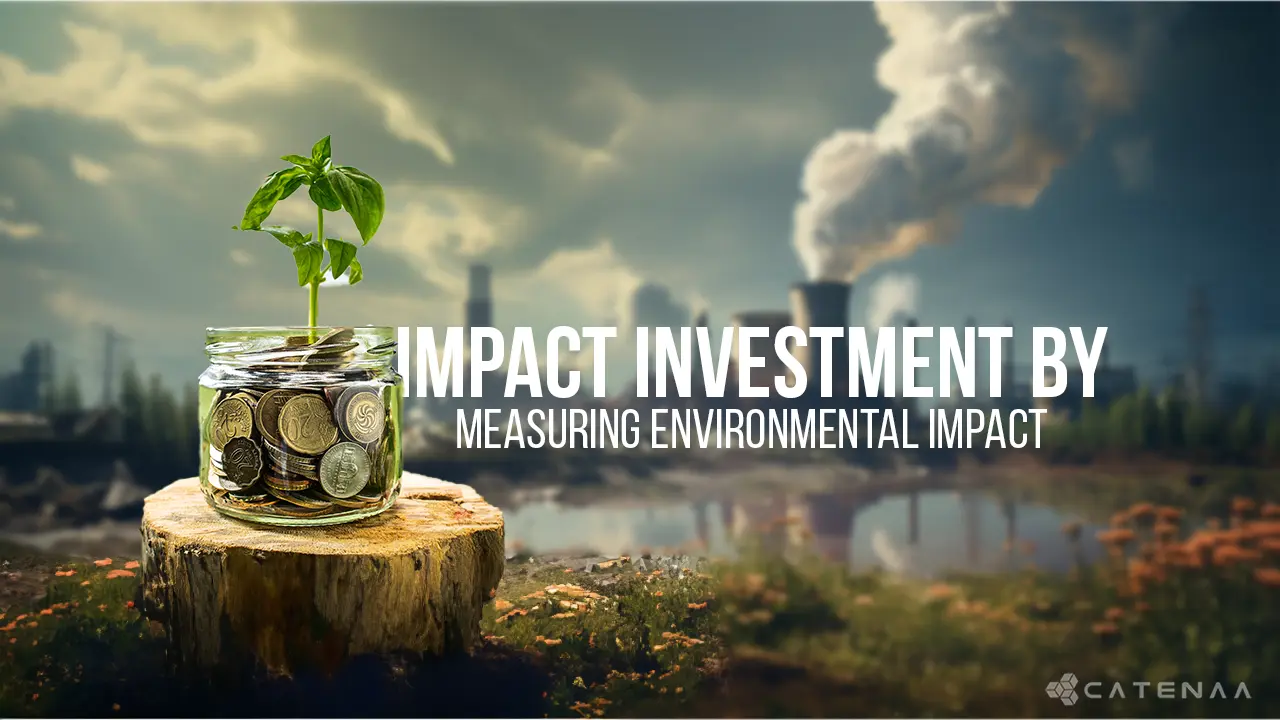Impact investing has become a potent tool to finance projects and initiatives that not only yield financial returns but also demonstrable environmental benefits in an era of growing awareness about the pressing need to address environmental concerns. This strategy, which is also known as “Impact Investing,” presents a viable way to support investors’ financial goals while promoting positive change for the environment.
This essay delves into the notion of environmental effect within the framework of impact investing, emphasizing the critical function of measurement in guaranteeing the prosperity and legitimacy of those undertakings. 1

Understanding Environmental Impact
The term “environmental impact” describes how human activity affects the environment and includes a broad variety of problems, such as pollution, habitat destruction, and resource depletion in addition to climate change. Impact investing concentrates on initiatives and businesses that actively work to lessen or even reverse these detrimental effects on the environment.
Impact investments in the environmental sector come in many forms, such as initiatives for clean water, sustainable agriculture, reforestation, and renewable energy. By tackling urgent environmental issues and earning a profit, these investments seek to advance long-term sustainability.
The Role of Measurement in Impact Investment
It is imperative to measure the environmental impact of investments for multiple reasons.

- Accountability: Measurement ensures that project participants and investors are held responsible for fulfilling their environmental pledges. It is possible to assess whether the desired impact is being realized with transparent data.
- Optimization: Continuous project improvement and optimization are made possible by accurate measurement. It assists in determining which tactics are most successful in accomplishing environmental objectives, increasing the effectiveness and impact of projects.
- Credibility: Impact investments are more credible when they are accompanied by thorough measurement and reporting. This is particularly crucial in a world where the industry’s credibility can be damaged by greenwashing, which is the dishonest promotion of ecologically beneficial methods.
- Investor Confidence: Investors can have faith in the financial and environmental success of their investments when measurement procedures are transparent and consistent. This may draw additional funding to the market for impact investments. 2
Measuring Environmental Impact
Assessing a project’s environmental impact entails calculating its long-term, frequently complicated environmental impacts. Several essential measurements and methodologies employed in effect measurement encompass:
The term “Carbon Footprint” refers to the quantity of greenhouse gas emissions that a project either produces or avoids. Investments with a climate impact are often measured in terms of reductions in carbon emissions. 3
- Biodiversity and Habitat Restoration: These metrics evaluate the beneficial impacts on ecosystems and biodiversity, including the preservation of endangered species, restoration of habitats, and increase in species diversity.
- Resource Efficiency: Impact measurement can monitor the more effective use of natural resources in industrial processes, agriculture, or urban development. Examples of these resources are water and energy.
- Social Impact: Social effects of environmental change are frequently felt. It is crucial to measure the impact of environmental projects on nearby communities, including the development of jobs and better access to clean water.
- Lifecycle Analysis: Determining a project’s total environmental impact requires evaluating the project’s whole lifecycle. This can apply to the stages of manufacturing, use, and disposal.
- Third-Party Verification: To increase transparency and trust, outside groups and specialists can confirm the environmental effect measurements.
Challenges in Environmental Impact Measurement
Impact measurement is important, but putting it into practice can be difficult. These difficulties consist of:
- Data collection: Accurate and consistent data collection can be challenging, particularly in large-scale initiatives or when working across international borders.
- Timeliness: It can be difficult to gauge immediate effects from environmental effects because they can have long-term effects.
- Standardization: It might be challenging to evaluate various projects and determine their respective impacts in the absence of uniform metrics and reporting standards.
- Complexity: Some environmental consequences, like the importance of protecting a unique ecosystem, are hard to measure with precision.
Impact investing is a powerful driver in the shift to a more sustainable future because of its emphasis on producing both financial rewards and favorable environmental results. However, the capacity to precisely quantify impact investments’ environmental impact is a prerequisite for both their efficacy and legitimacy.
The measuring of environmental impact is a dynamic, multifaceted field that calls for cooperation, standardization, and technical innovation. Addressing these issues is essential to achieving impact investing’s full potential in reducing environmental problems and creating a more wealthy and sustainable society as it grows.
- Impact Measurement: https://online.hbs.edu/blog/post/what-is-impact-measurement[↩]
- Impact Investment: https://www.carboncollective.co/sustainable-investing/impact-investments#:~:text=Effective%20impact%20measurement%20and%20management,investments%20to%20maximize%20their%20impact[↩]
- Impact Investment: https://earth.org/what-does-carbon-footprint-mean/[↩]


